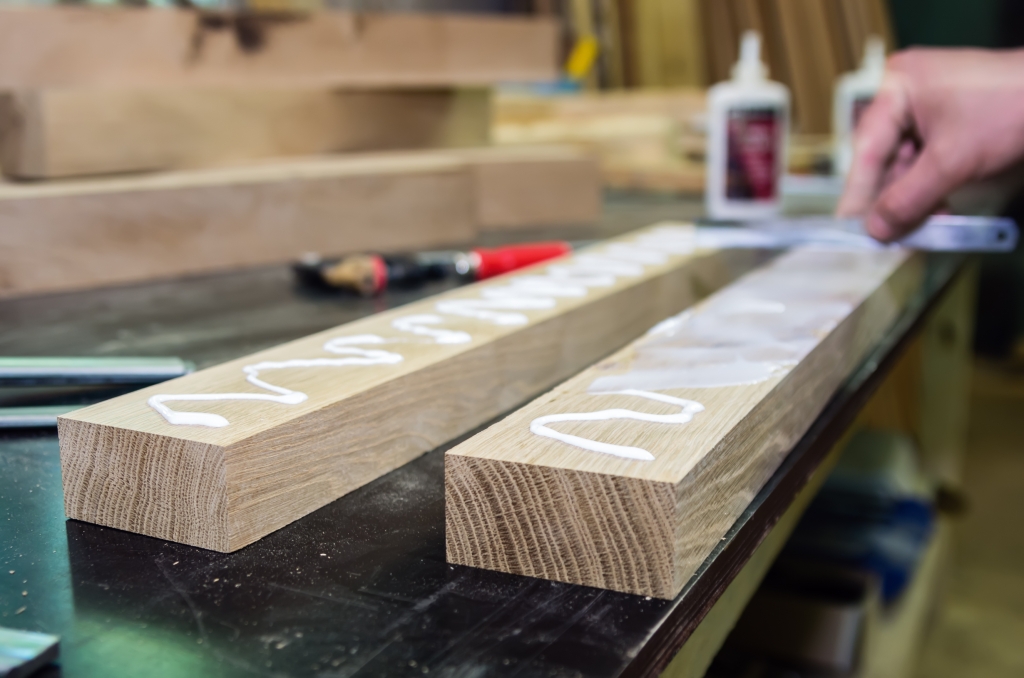Choosing the correct adhesive

Choosing the right adhesive for your project is an important decision that will streamline production, ensure high quality results, avoid waste and difficult clean-ups, saving you both time and money.
In this blog, we’ll look at the key factors you should consider when selecting the correct adhesive for your next project.
Substrates used
To ensure a strong, effective bond, it’s important to choose adhesives which are well suited to your chosen substrate.
If your adhesive is being used for exterior work, you will also need to consider how well the adhesive will be able to withstand different temperatures, humidity and UV exposure.
Bond strength
It’s important to consider the bond strength required for your job. Take into account the size of the part and how much mechanical stress there will be on the bond during use, to ensure you get a durable adhesive that matches your performance needs, as some adhesives have excellent tensile strength and very little shear strength.
Consider whether the stresses will be consistent or intermittent and choose an appropriate adhesive, as some can take extreme stresses for very short periods, whereas others can withstand long, consistent stress. Adhesives can be formulated to be more flexible, or with fillers to compensate for stresses.
Permanent vs. repositionable bond
Decide whether you need a strong, permanent bond, or if you will need to reposition joined surfaces.
Hot melt adhesives can be melted or softened repeatedly by heat, which allows for re-positioning during assembly. Polyurethane hot melt, commonly known as PUR, will fit applications that require a stronger bond or higher endurance to the elements.
Surface preparation
When selecting an adhesive, surface condition must be considered, whether it is rough, smooth, porous, coated or uncoated, to find an adhesive to suit.
Consider if you will be sanding the item, as this will also affect the surface texture. For optimal adhesion, the surface should be clean prior to use.
Temperatures endured
Temperature changes can affect how adhesives cure, perform over time and their shelf life. Check which adhesives are best suited to the temperatures the product will be exposed to during use, distribution and storage, to prevent significant drops in performance and cracking.
As a guide, thermosetting adhesives such as melamine, phenolic and formaldehyde resins form strong bonds and have good resistance to higher temperatures. Silicone adhesives have a high degree of flexibility, as well as a very high temperature resistance.
Humidity levels
It is worth considering moisture and humidity levels, as they can cause adhesives to become softer, foamy and less effective. It will also affect drying times; when humidity is low, drying is accelerated and when humidity is high, drying will be slower.
Acrylic adhesives show some resistance but because they are water-based, they are more susceptible to moisture which will affect their durability.
Viscosity required
The dimensions of the parts and how they fit together are very important in deciding which is the best adhesive to use. Larger parts and thicker bond gaps may require a slower cure to reduce shrinkage.
Low viscosity products are best for applying to narrow bonds, as the adhesive can be spread easily and get a close bond. High viscosity products are best for use in vertical applications to ensure reliable, durable adhesion. As a general rule, cyanoacrylates and anaerobics suit the thinnest bond gaps, whereas epoxies and urethanes are better suited to thicker gaps.
Curing time
Take into account how the product will be sealed and the curing time required.
UV cure adhesives can usually be cured quickly at room temperature or with heat. They must be exposed to UV light to cure, so at least one of the substrates must allow transmission of UV light. Certain adhesives will not remain clear over longer exposure to UV radiation.
Heat-cured thermal adhesives can require high temperatures, which might be detrimental to components and cause cracking, but will generally cure faster.
Finish required
Consider the desired finish you require from your project and if the adhesive will be visible once you have finished. You may choose to opt for a clear adhesive, or a coloured adhesive to match your job.
Some adhesives can be easily coloured but others cannot, you will need to check if colour matching is possible, if it will affect your desired final appearance.
User Safety
Always check manufacturer guidance and the Material Safety Data Sheet (MSDS) for advice on handling, mixing and applying the product, as well as storage and disposal, to ensure user safety.
Environmentally friendly options
With so many types of adhesives on the market, it is advisable to look out for environmentally-friendly, VOC-free adhesives. Special care should be given to disposing of any excess waste safely so it will not cause harm to the environment.
Meet regulations
Your products may be required to meet FDA or EU regulations. Always check the adhesive meets regulatory requirements before purchasing.
Test Adhesives
As we’ve seen, there are so many variables to consider when choosing the right adhesive.
As part of our Adhesives Audit at Redwood, we can put adhesives to the test in our lab and recommend the best products to use. We will provide samples for you to try in the workshop before committing, to ensure you get the best adhesive for your requirements.
For a reliable adhesive solution, contact our expert team on 023 9223 3310 or email sales@redwood-uk.com
